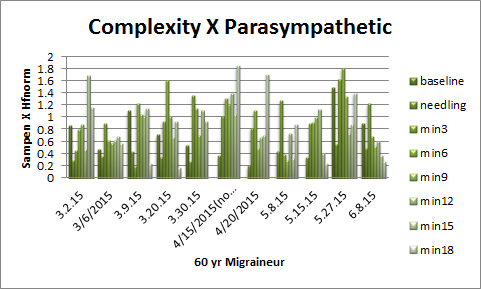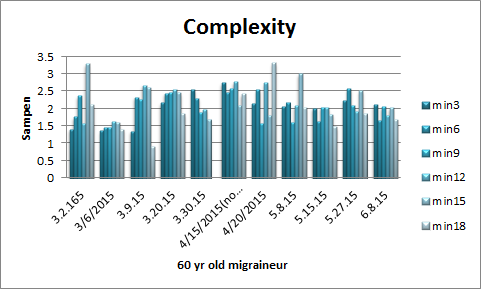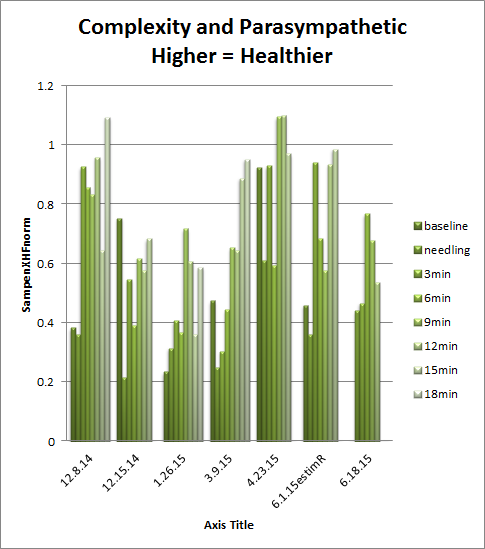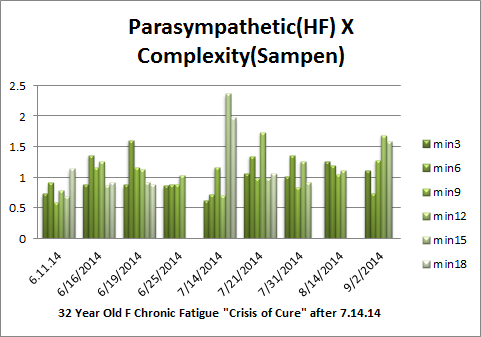HRV: incremental improvement versus quantum shift
Kristen Sparrow • July 05, 2016


This post is speculative, but tries to address the conundrum that in profound clinical responders, you don’t always see an improvement in their HRV over time. The patients whose data is presented here were all profound clinical responders with symptoms that were reduced within a few visits. I’m wondering if these HRV spikes early in their treatment are a harbinger of positive clinical results.
- Migraineur had severe migraines, 3X per week and they were reduced to one or two per month.
- 70 year old with mild to moderate intention tremor whose symptoms were diminished within a month. ]
- 32 yr old severe chronic fatigue, but after the treatment on 7.14 had a dramatic menstrual cycle and then was fine with no more symptoms. Then a
- 35 yr old man with severe anxiety who felt remarkably better after 1 treatment.
- 75 yr old with neuropathy of 12 year duration who was 80% better after 1 treatment.
- (Update) 60 yr old with sinusitis, asthma and allergies. Has had improvement over time clinically, but her initial visit fits the pattern of a spike that what was not repeated.
In all of these patients, in the first visit, you see a dramatic spike in their Sampen X parasympathetic. This measure combines vagal tone with complexity. It may be brief but there. The exception is the 32 yr old with chronic fatigue, who had no results until 7.14.14, but you see the spike there.
This is all speculation, but I wonder if sometimes, we incremental increase in vagal tone and stress reduction, and gradual symptom improvement. But other times, we see a quantum shift, sometimes with the very first treatment and leads to a healthier set point.








